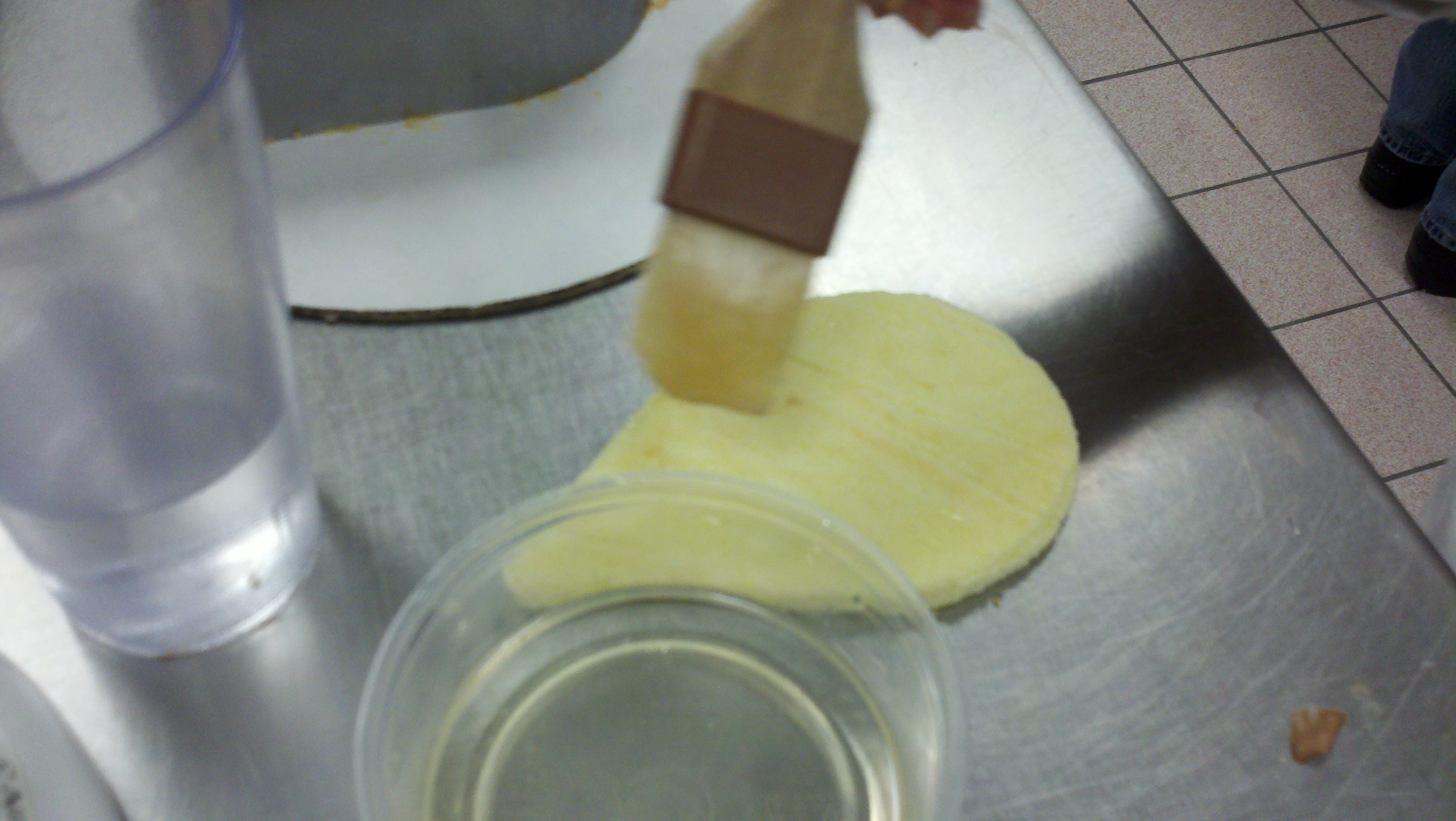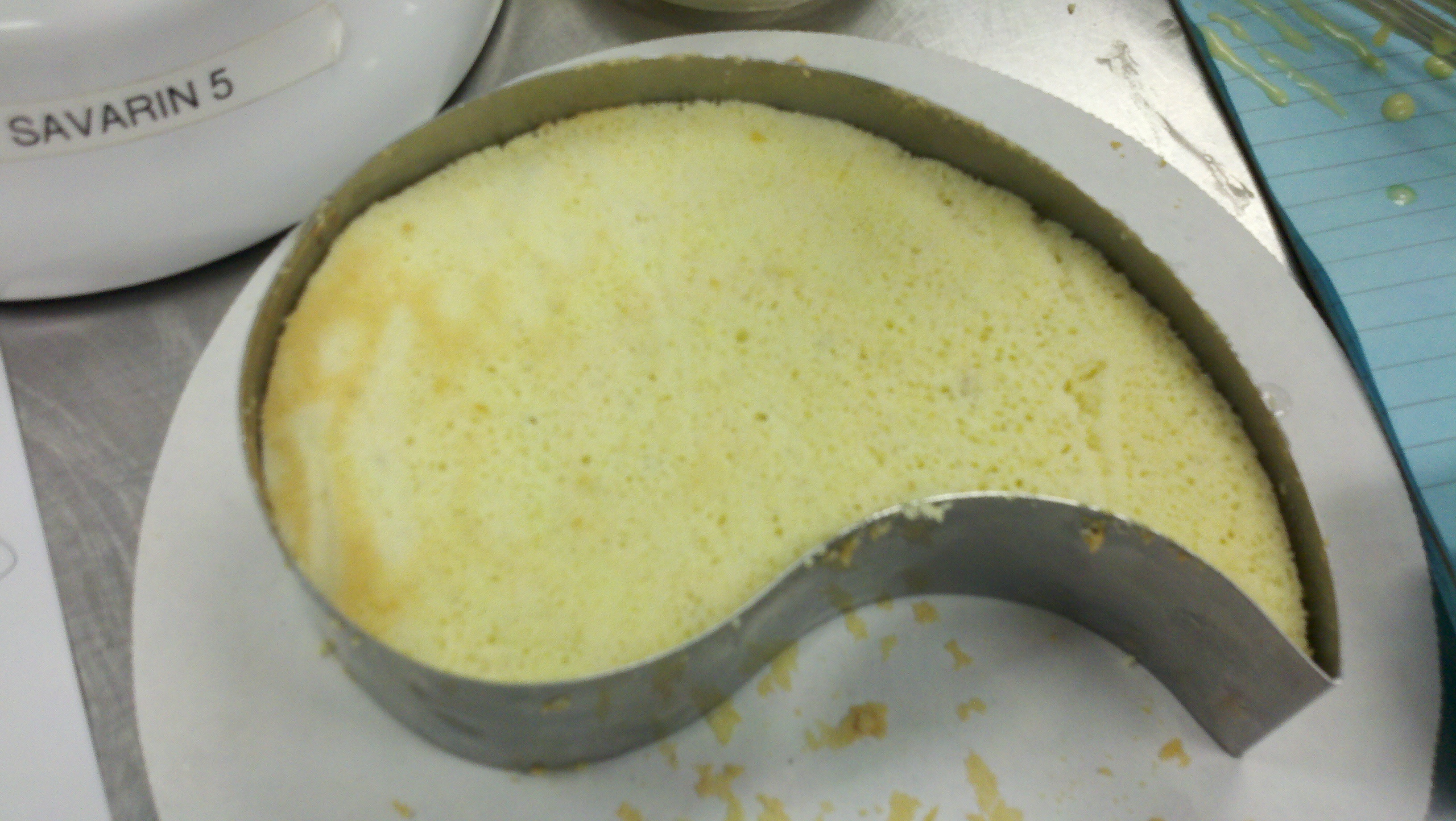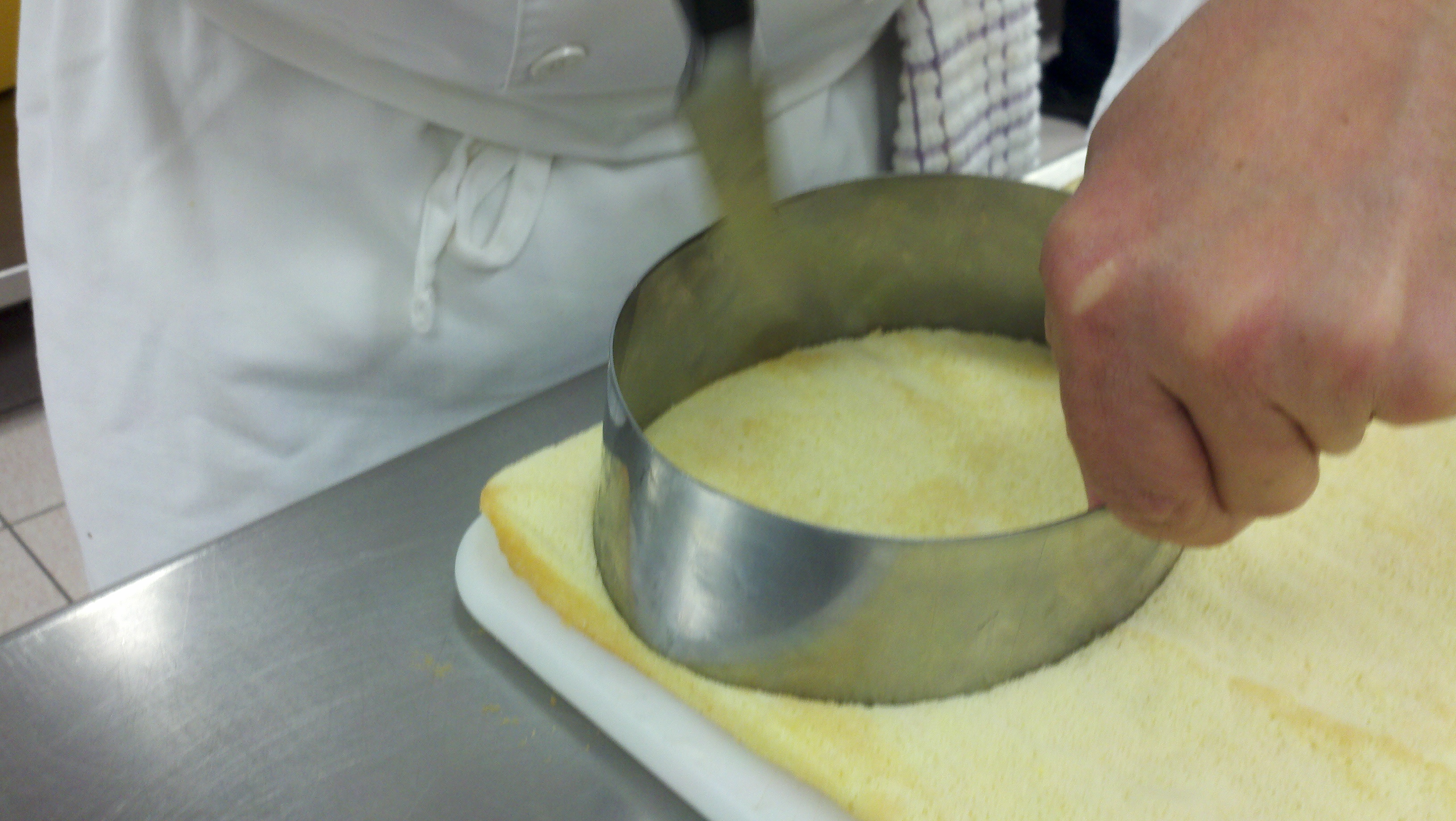Just about everyone has heard of mousse, but fewer know about its light and airy cousin, the Bavarian. It’s a nice thing to have in your repertoire when a heavy main course begs for a mercifully light dessert. Make no mistake: this baby is still very rich, but it lands lightly on the tongue.
You can serve it by itself, in a lovely little dessert dish, as I did for a guest the other night, or you can build it into a cake, which is what we’re doing in pastry techniques class at L’Academie de Cuisine. We’re not quite done, but here are a couple shots of my little cake in process:
At this point, I had used this curvy little mold to cut out two identical pieces of vanilla cake (remember that nice one we used for the roulade? It’s perfect, because you spread it out real thin to bake it, and it’s a great texture for this, too). [Don’t be confused! I’m photographing Michael’s cake below. He used an oval mold.]
We brushed simple syrup over one piece of the cake and placed it in the bottom of the mold. We spooned chocolate Bavarian over that until it reached halfway up the mold.
Then we brushed simple syrup on both sides of the second piece of cake… 
… and put it in the mold on top of the chocolate Bavarian.
 Then it was time for a layer of white-chocolate Bavarian, all the way up to the top of the mold. (I must have zoned out around this time in class, because for some reason, I don’t have a picture of this. Sorry!)
Then it was time for a layer of white-chocolate Bavarian, all the way up to the top of the mold. (I must have zoned out around this time in class, because for some reason, I don’t have a picture of this. Sorry!)
We put the nearly-done cakes in the freezer. On Monday, we will finish them with a “mirror” glaze and unmold them. That should offer some nice pictures!
But in the meantime, here are the recipes if you would like to try your hand at a Bavarian. Those of you who tilt toward the pastry-nerd side might be amused to know–or you might already know–that a Bavarian starts with that omnipresent base, crème anglaise. It can be used as a sweet custard sauce, or as the base for ice cream, crème brûlée, or buttercream. Here it’s used as the base for Bavarian.
White Chocolate Bavarian
2 c. milk
4 oz.
4 egg yolks
vanilla to taste
8 oz. white chocolate
5 ½ sheets of gelatin
2 c. heavy cream
Soften the gelatin sheets in a bowl of icewater.
Set out a large, clean bowl with a sieve over it. Keep nearby.
Put the milk and a bit of the sugar in a saucepan over medium-high heat.
In a bowl, whisk together the rest of the sugar with the yolks until light.
When the milk is nearly at a simmer, slowly drizzle about one-third of it into the yolk-sugar mix, whisking constantly.
Pour the mixture back into the saucepan with the remaining milk and cook over low-medium heat, using a wooden spoon to stir constantly. Watch it closely so it doesn’t scorch.
Test the crème anglaise for doneness this way: coat the back of the wooden spoon with it and check to see whether it holds a trail that you make by drawing you finger through it. Alternatively, you could cook it until it reaches 180 degrees on a candy thermometer.
When it reaches 180 degrees or holds that trail, take it off the heat immediately. Add the white chocolate pieces and the vanilla.
Pour the mixture through the sieve into the clean bowl. Remove the softened gelatin from the icewater and wring the water out of it. Stir it into the hot crème anglaise.
Put that bowl into the bowl of icewater that had been holding the gelatin. Let it cool in the icewater bath, checking and stirring periodically to see that the gelatin is dissolving nicely. Don’t let it get too cold; what you’re looking for is “cool.”
Meanwhile, whip the heavy cream until it is thickened but still very soft. It should be easily pourable. Whip just past the point that you can see tracks left in the cream from the whip attachment.
Fold the cream into the crème anglaise until it’s incorporated. Pour immediately into whatever mold or cake you wish to use it for because it will begin to set up quickly.
Chocolate Bavarian
2 c. half and half (we’re using half and half instead of milk here because the cocoa has no fat. If you choose to use bittersweet chocolate, you might offset the richness by using milk)
1 1/4 oz. cocoa powder or 6 oz. bittersweet chocolate
5 egg yolks
5 1/2 oz. sugar
5 1/2 sheets gelatin
2 c. heavy cream
Follow the instructions for white chocolate Bavarian, substituting the cocoa or chocolate for the white chocolate addition just before you put the mixture through the sieve.






Another recipe that’s going to kill my diet…but how can I resist!!